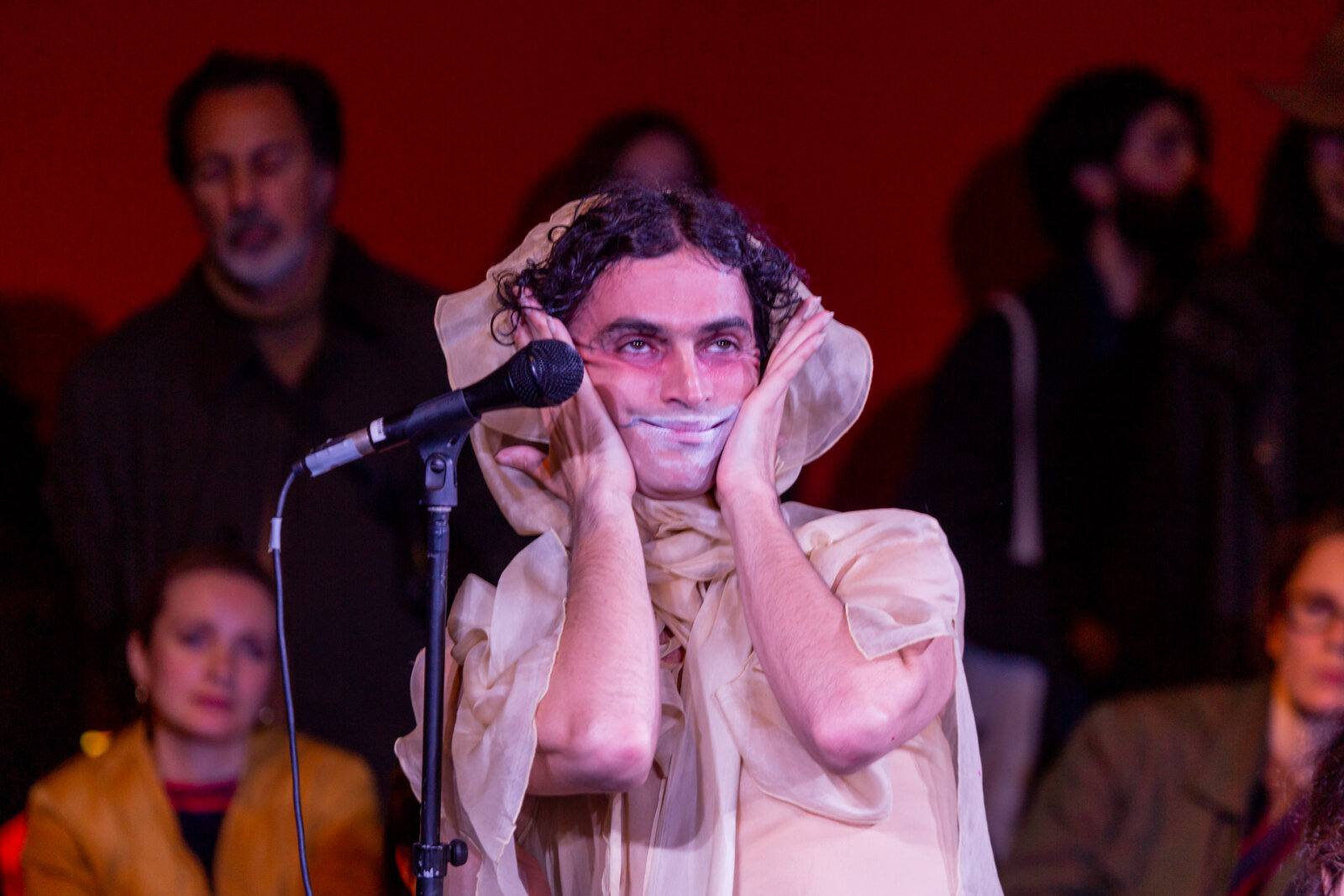PRICE has launched several musical projects and released them through various music labels such as cazarnagora and Latency. He has taught workshops and given lectures at various institutions, including the Art Academy in Ghent (Belgium), KEM Space in Warsaw (Poland), Lateral Roma in Rome (Italy), Gerrit Rietveld Academy and Sandberg Institute in Amsterdam (the Netherlands), and Institute Art Gender Nature in Basel (Switzerland).
In addition to his artistic practice, PRICE took on the role of guest curator for the performance program at the renowned festival Les Urbaines in Switzerland from 2017 to 2021. Beside that, he is one of the five curators of the art space Lateral Roma, which he co-founded with Geraldine Tedder in Rome in the year 2020.
PRICE work is characterised by elaborate soundscapes, costumes and stage design often developed in collaborative constellations. His productions play with the audience’s expectations of the exposed, ostensibly authentic self of the performer, who emotes before their eyes. They are interspersed with pop-cultural set pieces, mechanical sounds, rhythms and his own singing voice. The voice forms a central element of his work. PRICE views it as an acoustic form of emotional communication outside language’s imperative to create meaning. In PRICE’s work, different spaces—each with their own economies, mechanisms of historicisation and exclusion, norms and potentials—overlap: the stage of theater and performance, the club, digital space, the fashion runway, the exhibition space. The drama known as PRICE unfolds against the backdrop of spaces divided into their individual, constituent parts.
His performances alternate between total immersion and the abrupt unmasking of the means of theatrical staging. Part of this involves the emotional work that has to be invested in order to maintain the fiction of the performer’s individual identity—a genuine expenditure that is always also an effect, like the artificially shimmering sweat on his forehead. These are not the irreconcilable oppositions of artificial and authentic around which he moves. Rather, PRICE is interested in the conflicting relationship between these socially normative categories, the realm of which is the (queer) self, the (queer) body. Misfit costumes reference a variety of other possible forms of wearing by different bodies; instances of stumbling and struggling sneak into PRICE’s work. For him, failure is always also part of a queer strategy: an indifference to assimilation, rigid identities and the demands on the self in digital capitalism. It is a second-degree failure that is always part of the presentation.

